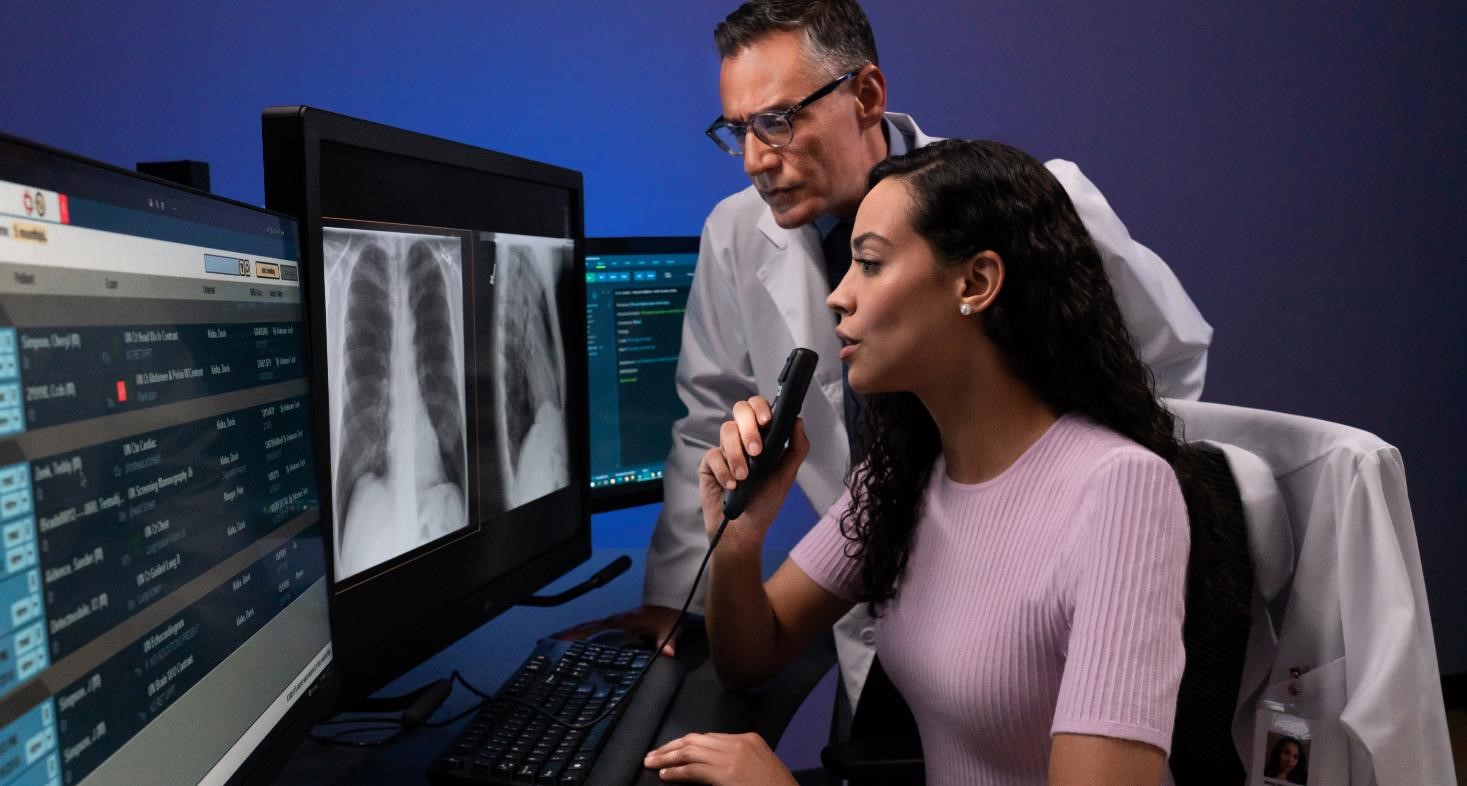The impact of cloud and AI technology on radiology is rapidly accelerating. But what does this mean for radiologists when they sit down to read an exam? What does it mean for administrators supporting radiology workflow? And what does it mean for health systems, as they strive to do more with less? To find out, I spoke with Griff Van Dusen—a highly experienced PACS Administrator, whose radiology team has now been using PowerScribe One for more than a year.
This blog was contributed by Luanne D’Antoni, Senior Product Manager at Nuance.
Luanne D’Antoni: Tell us about yourself, your organization, and its radiology group.
Griff Van Dusen: I‘ve been at Memorial Health System for 27 years, and in radiology administration for 19. We’re located on the Mississippi Gulf coast near Biloxi and New Orleans. We have three imaging centers and seventeen radiologists based across four states. Right now, we perform about 220,000 exams a year.
Some radiologists read at our main facility and some work from other sites. All our radiologists are also able to work from home.
Luanne: You converted everyone from PowerScribe 360 to PowerScribe One last summer. How did it go?
Griff: The implementation process was outstanding. Nuance does it a bit differently compared to some of our other vendors. They created a test system using our own production data, templates, and users to train us on. Then they were with us onsite for a week to support us through go-live. Nuance proactively connected us with the right people, including engineers, to talk 1:1 with our radiologists and understand the problems they were having. I’ve seen a lot of implementations, and I’ve never seen a company do that before. At least, not without a lot of begging and pleading.
Luanne: Has your team seen a difference between PowerScribe One and PowerScribe 360 in terms of speech recognition?
Griff: The cloud-hosted speech recognition in PowerScribe One is significantly more accurate. We still use editors in our reporting workflow, and in the past, they would look at 50% to 55% of our reports. Since we moved to PowerScribe One, they look at around 28%—and that’s mostly to fix formatting issues, or to add extra text that we haven’t yet built into our templates. I’ve sat with them and watched them, and they’ll change a word in maybe every third report.
Also, our radiologists used to complain that there were some words the AI couldn’t get. That’s not a problem anymore. When you dictate in PowerScribe One, it might take a couple of attempts to get a tough word right, but it quickly learns.
Luanne: What does that mean for your radiologists in their daily work? For example, if they’re able to dictate without stopping to fix mistakes, what’s the impact?
Griff: With PowerScribe One, our radiologists are getting more done in less time.
If I ask them, they’ll tell me it’s made them 10%, 15%, or 20% more productive. But really, I don’t need to ask them—I can just look at their queue. When I arrive in the morning, there might be a hundred things on it. Four radiologists will come in, and by eight o’clock, there’s nothing left.
Luanne: Let’s talk about your own workload. Are you seeing any benefits now that you’re using PowerScribe One?
Griff: Absolutely—I’ll tell you about my favorite feature. We rely heavily on templates and macros to help standardize our reports. In the past, that could mean I needed to spend hours on updates and maintenance. PowerScribe One uses report building blocks—called modules—within templates. Modules are blocks of content that we define. I can make a change in a specific module and now update all impacted templates at once.
For example, we recently added TC scores for mammograms. We created a module and added it to the radiologists’ templates. Then we decided we wanted to alter the wording. Instead of having to update hundreds of templates, I could just change the text in the module. It’s a tremendous time saver.
Luanne: What other features of PowerScribe One are making a difference for your team?
Griff: One thing that we didn’t have before is quality checking. It’s now included in PowerScribe One and will alert you to things like laterality and sex mismatches. And that’s cut our mismatches down to zero. We just don’t have them these days.
Luanne: Let’s zoom out a bit. Did you see your conversion to PowerScribe One as strategic? Does implementing next-generation radiology reporting support Memorial Health System’s longer-term goals?
Griff: Definitely. As I mentioned, we have a mix of local and remote radiologists. Because you don’t need local profiles or training for cloud speech, it makes onboarding radiologists so much easier.
It also helps us optimize our use of editors and adapt as they move on or retire.
Luanne: Do you have any further thoughts about working with Nuance?
Griff: Yes—you know, I deal with a lot of technology vendors. But I do see Nuance as a genuine partner. They’re just very responsive and always a pleasure to deal with. With PowerScribe One, we’re better positioned for the future and know that Nuance is there to support us along the way.






